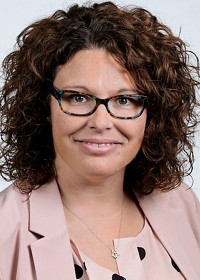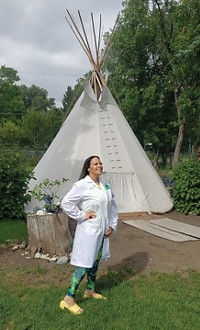Advertisement
Grab your lab coat. Let's get started
Welcome!
Welcome!
Create an account below to get 6 C&EN articles per month, receive newsletters and more - all free.
It seems this is your first time logging in online. Please enter the following information to continue.
As an ACS member you automatically get access to this site. All we need is few more details to create your reading experience.
Not you? Sign in with a different account.
Not you? Sign in with a different account.
ERROR 1
ERROR 1
ERROR 2
ERROR 2
ERROR 2
ERROR 2
ERROR 2
Password and Confirm password must match.
If you have an ACS member number, please enter it here so we can link this account to your membership. (optional)
ERROR 2
ACS values your privacy. By submitting your information, you are gaining access to C&EN and subscribing to our weekly newsletter. We use the information you provide to make your reading experience better, and we will never sell your data to third party members.
Science Communication
Editorial: Is it time to abandon “citizen science”?
Dropping the term could avoid minimizing the work of data collectors that scientists depend on and include them as true collaborators
by C&EN editorial staff
August 31, 2024
| A version of this story appeared in
Volume 102, Issue 27
There is a question that has been exercising some folks working with science outreach for some time. Is citizen science benefiting the citizen scientists rather than just using citizens as data collectors?
On its face the question may appear unduly cynical.
One common setup for citizen science is large-scale data collection and environmental monitoring. Such projects are sometimes in the interest of the people doing the sampling, such as the UK’s SmartRivers initiative, which recently made headlines for measuring biodiversity as a proxy for water quality. Projects sampling soil in community gardens to test for lead also come to mind.
Other environmental projects can be a learning experience for communities. As reflected in this C&EN story about the South River Federation (now part of Arundel Rivers Federation), scientists at government agencies trust and use the data because the federation trains community members before they volunteer.
And sometimes, people involved in these projects would argue that they do it simply because they love it. Examples include the Audubon Christmas Bird Count, which has tracked bird population numbers in the US for more than 120 years and the Butterfly Conservation in the UK whose work spans more than 50 years.
But the question is not about the benefits of citizen science to the community, which are clearly real. It is about appreciating the particular method of scientific practice at work.
Broadly, there are three areas of activity in research: data collection, data processing, and analysis. And the data collection element is crucial—some would argue the most important.
Some programs point the way to a more progressive model of scientific collaboration—for instance. One that comes to mind is the Howard Hughes Medical Institute’s Science Education Alliance-Phage Hunters Advancing Genomics and Evolutionary Science (SEA-PHAGES) run by Graham Hatfull’s lab at the University of Pittsburgh and the HHMI.
At more than 175 institutions, SEA-PHAGES trains faculty on how to teach the program and sends students the tools to sample bacteriophages from their local soil. After students isolate their phages’ DNA, they can send it to collaborators in Hatfull’s lab to sequence it and then analyze the genetic data using bioinformatic software SEA-PHAGES also provides.
Hatfull insists that students should be given the right vocational status. “We think of them as ‘scientists’ who are doing authentic scientific research, just like—and alongside—other researchers,” not citizen scientists, he says. What is striking about Hatfull’s philosophy is the way the inclusive approach empowers students to interact with the data they collect.
This kind of inclusive approach to discovery is consistent with transdisciplinary research methods, in which those who lack formal science training but have another type of knowledge can contribute to the research base and have real-world impact. The transdisciplinary method has had some traction in United Nations discussions.
Some initiatives have gone further and offered to pay people who contribute knowledge to research efforts. Stephanie Beaupark at the University of Wollongong in Australia is incorporating Indigenous knowledge into chemistry research. Working with Indigenous knowledge holders and traditional weavers she collects and curates data on weaving practices and local climate. Notably, Beaupark uses part of her research grant to compensate her Indigenous partners for their work.
Not every research project will be able to afford monetary compensation, but it does not preclude the possibility of providing collaborators with recognitions, as coauthors or as copresenters at conferences, for example. Leaders of citizen science projects should challenge themselves to involve, educate, and compensate those who advance research. If researchers can pull that off, they could abandon the word citizen and call it what it is: science.
If we are serious about giving recognition and boosting inclusivity in distributed research efforts, it will be a challenge to the current scientific publishing model, in particular. But scientific outreach, like our knowledge of ourselves and the world around us, has a history of evolving.
This editorial is the result of collective deliberation in C&EN. For this week’s editorial, the lead contributor is Manny Morone.
Views expressed on this page are not necessarily those of ACS.




Join the conversation
Contact the reporter
Submit a Letter to the Editor for publication
Engage with us on Twitter